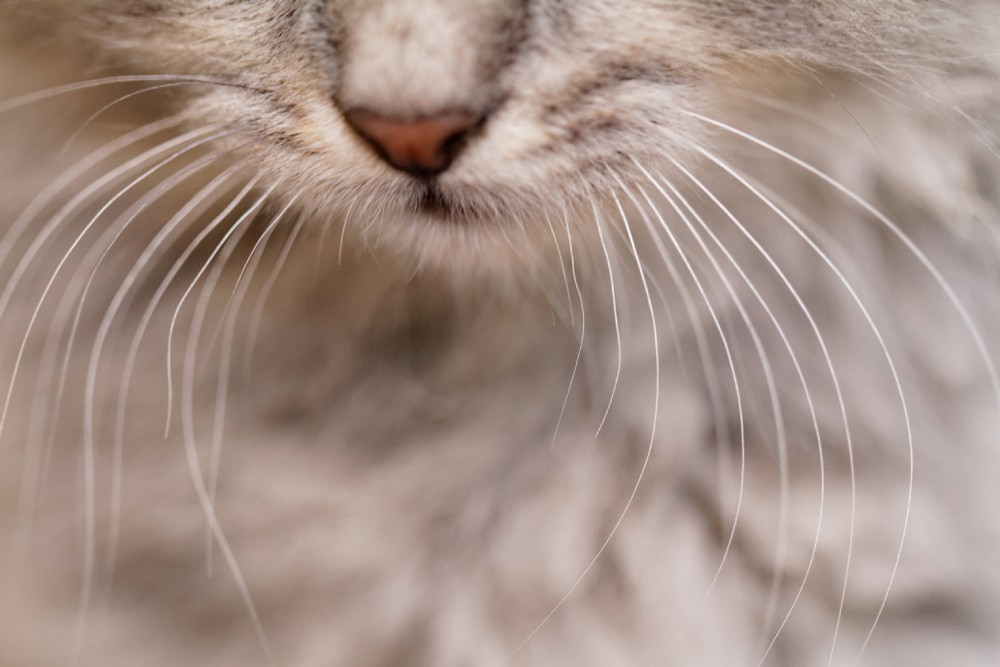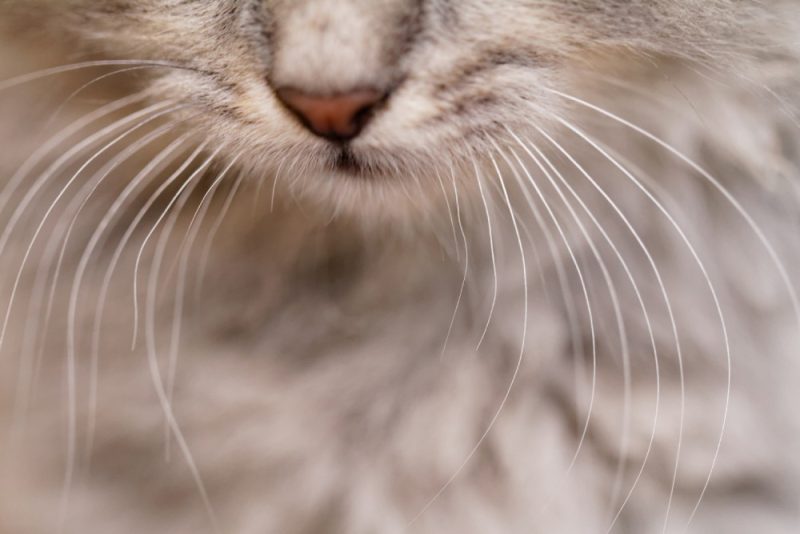Cats have about 12 whiskers on each cheek, a few under their chins and above their eyes, and a few on the back of their paws. Whiskers are important parts of the feline anatomy and essential to how cats understand and interact with the world.
Cats use their whiskers for several tasks, including determining whether they can fit through spaces, right themselves when falling, and communicate emotions. Whiskers also help cats move around in the dark.

How Do Whiskers Work?
Whiskers are hairs that send sensory information to cats’ brains and nervous systems. They’re made of keratin and are set in follicles full of nerve endings, so cats are aware of anything that simulates their whiskers.
Whiskers vibrate when they come into contact with something or when air flows over them.
Nerves in the follicles pick up the vibrations and send them to the brain to interpret them. Cats can “see” objects and figure out how fast they’re moving due to air current changes picked up by their whiskers.
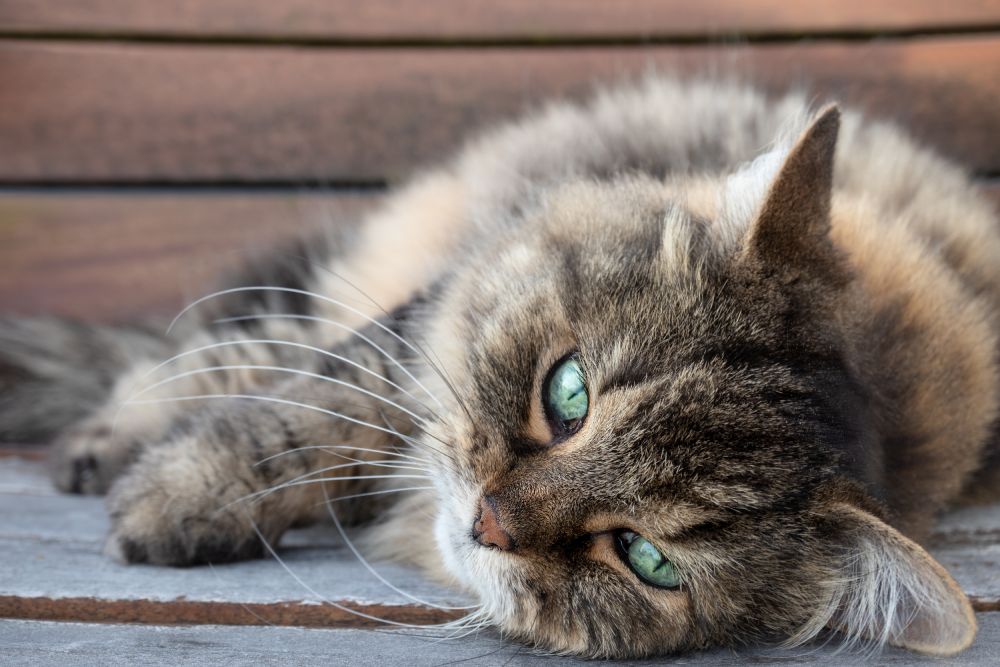

What Functions Do Whiskers Have?
Whiskers are incredibly important to how cats perceive the world. They provide sensory input that helps them evaluate their environments through touch, right themselves when falling, communicate with other cats, and even “see” in the dark.
1. Sense
Whiskers are essential to a cat’s sense of touch. They also help them determine if they can fit into tight spaces.
2. Orientation
Cats have proprioceptors at the base of their whiskers, which can provide information about their spatial orientation.
3. Communication
Cats are master communicators who use various techniques to communicate with other cats and perceptive people, including scent, vocalization, and body language.
Those who are in pain sometimes appear to grimace. Their whisker position is a Feline Grimace Scale (FGS) action unit. The FGS tool allows pet parents and veterinarians to determine if cats are in acute pain.
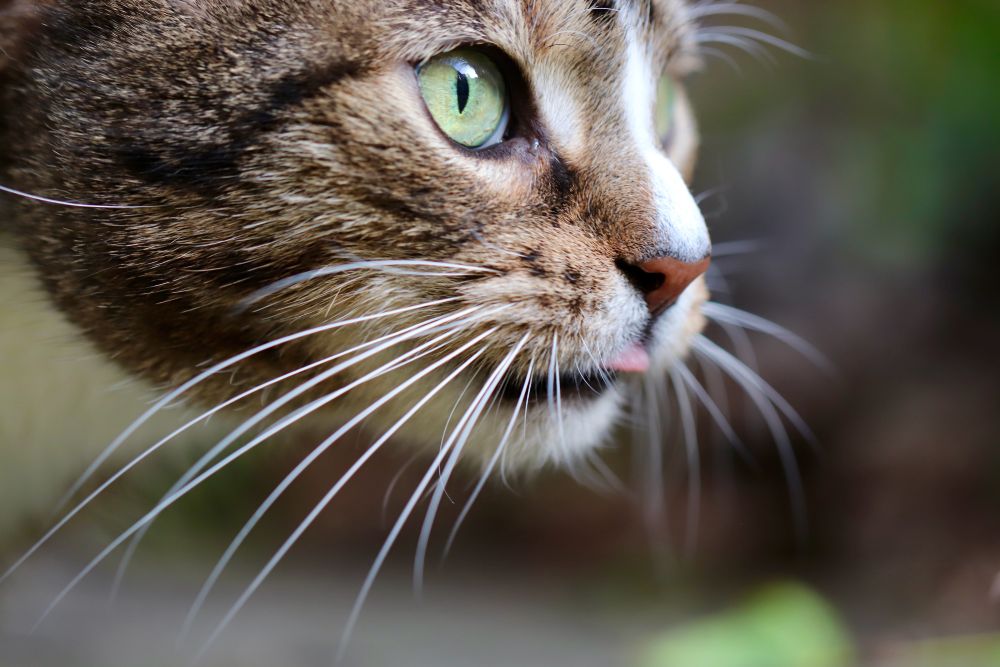
4. Cats Use Whiskers to “See”
Cats are farsighted and potentially rely on the air currents picked up by their whiskers to follow the movements of prey. Air currents picked up by whiskers can alert cats in the wild that there’s prey nearby. Cats also use the information provided by air currents to help them get around in low-light conditions.

Frequent Asked Questions
What Is Whisker Fatigue?
Because their whiskers are so sensitive, too much sensory input is thought to potentially become overwhelming for some cats. It happens when cats dine from bowls that are small enough for their whiskers to brush against the sides.
Providing shallow, wide food and water bowls can prevent whisker fatigue.
Do Cats’ Whiskers Grow Back?
Cats regularly shed and regrow whiskers. It can take several weeks to a few months for them to regrow.
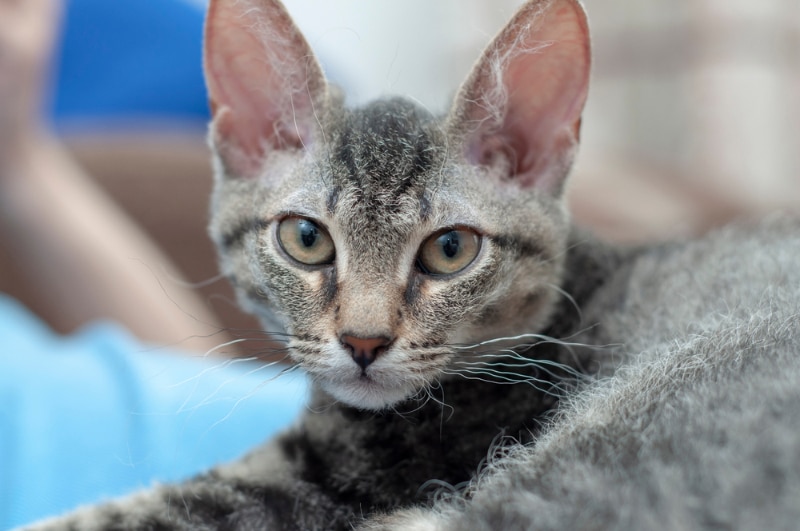
Are There Diseases and Conditions That Can Cause Cats’ Whiskers to Fall Out?
Yes. Any condition that can cause fur or skin issues, can affect their whiskers. Infections can cause cats to lose whiskers, and some medications can lead to whisker loss as well.

Conclusion
Cats use their whiskers to help them determine if they can fit through small spaces, right themselves when falling, and navigate dark environments. Each whisker sits in a follicle full of sensory nerves that send information to the brain that cats use to create pictures of the physical spaces they’re in.
They’re designed to pick up minute vibrations with exquisite sensitivity, and too much stimulation can become overwhelming for kitties. However, serving food and water in wide bowls can prevent whisker fatigue.
Featured Image Credit: Nneirda, Shutterstock

